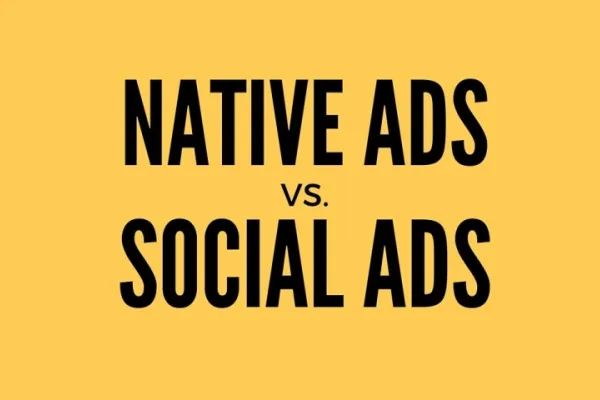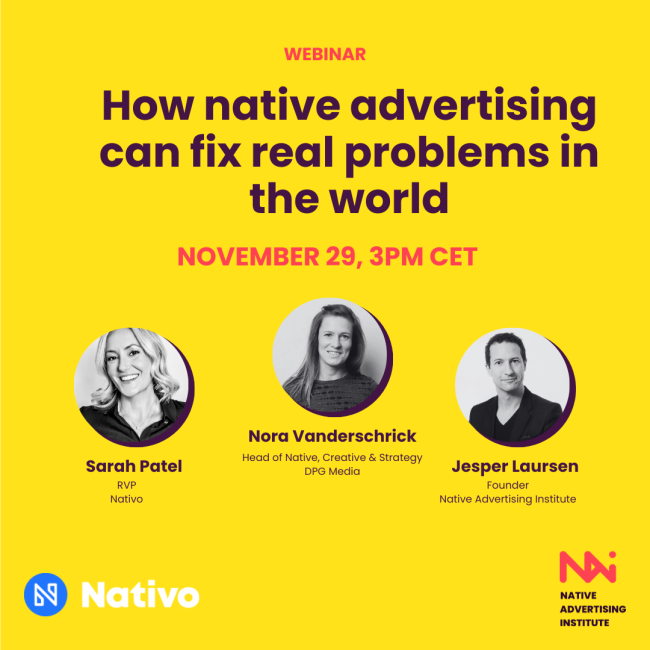
 Details
Details
We have all heard native ads and social ads, but not all of us are extremely clear on the differences between the two or when to use each. To get started off on the right foot, let’s start with some simple definitions. Social Ads are used to promote your account, discounts or any other content to relevant audiences on social network who would actually be interested in the content. These social media campaigns can have various different objectives including increases in website clicks, application downloads, purchases, followers, engagement and leads.
Native advertising is defined as the type of ads that are naturally meshed within editorial content. These Native Ads have the two main goals of both driving the users to take a certain action and positioning the image of the brand in the consumer’s mind. But social ads are technically meshed within the already existing content on the social networks, so wouldn’t that make them native ads too?
This is where the terms start to get a little tricky. According to Smart Insights the definition of Native Advertising is, “Online content that is created for paid promotion of a brand on a media site which doesn’t use a traditional ad format such as a banner ad, but includes editorial content such as a blog post or infographic”. Now this changes things because it specifies Native Advertising as being a type of content, which would differ it from some types of social ads, which promote certain accounts and paid searches and not only content. So the end all definition is that Social Ads can, in fact, be considered Native Ads but not in all cases as mentioned.
So let’s get to the important stuff, when do you use each type of advertising? The key to answering this question for you brand is in knowing your main objectives. You need to match your objectives with the type of advertising in order to get the most out of your investment. Do you want to increase the amount of purchases on your retail website? Then social ads would be a good idea. Is your main goal to build your image and brand awareness? Then Native Ads with a possible addition of Social would be the best bet. Sit down with your team and define all of the exact objectives that you have. Below we have defined some situations that provide a clear difference in the uses of both ad types.
Building, growing and diversifying an audience
If you’re just starting with social media then you are likely to have little, to no real community of followers. The best way to start building this up is by promoting your account to a targeted audience. To get the best results possible you should segment your campaigns as much as possible, this will increase your engagement as well as decrease your costs. For example, if your retail company only sells women’s clothing then you should segment your campaigns to the women in relevant geographical locations and within the age range of your target client. Get as specific as you possibly can in order to obtain the best results possible.
In addition to building your community for scratch, social ads are great to building on an already existing community. Once you already have a stable audience built then you can target similar users to those who already follow you to grow your reach. If the followers you currently have are too specific and you’d like to diversify then this is another objective that is easily achievable through social ads. This issue is a common one because if you start to build your audience in a specific location for example, then your community will most likely start to grow with users only from around that area. In order to increase your audience base you can start social ad campaigns that target users from other locations or demographics, which will start a new trend and expand your base of followers.
Increasing content visibility
If your main objective is to increase the reach of your content to build the brand’s image then native advertising could be your best bet. Many times on social media, even though you have a large base of followers, many of them never make it to your website, let alone to read your content. The engagement that you receive on social networks can come from bots and fake accounts as well as many accounts that don’t ever actually open the links on your posts. For this reason, although social networks can seem attractive and can provide you with exciting data, many times it isn’t predictive of the real results and interactions your brand has achieved. This is where native ads can come in handy and promote users actually clicking on and reading your content. This content should reflect your expertize and provide the reader with a ton of value that they will naturally want to share with their networks, which will help position your brand as the leader in your industry.
To get the most out of Native Ads and Social Ads your brand needs to define its top objectives and then create the strategy with the appropriate tool. Although some Social Ads can be considered Native Ads it is important to know the real differences between them and when to use each in order to maximize your company’s results!


